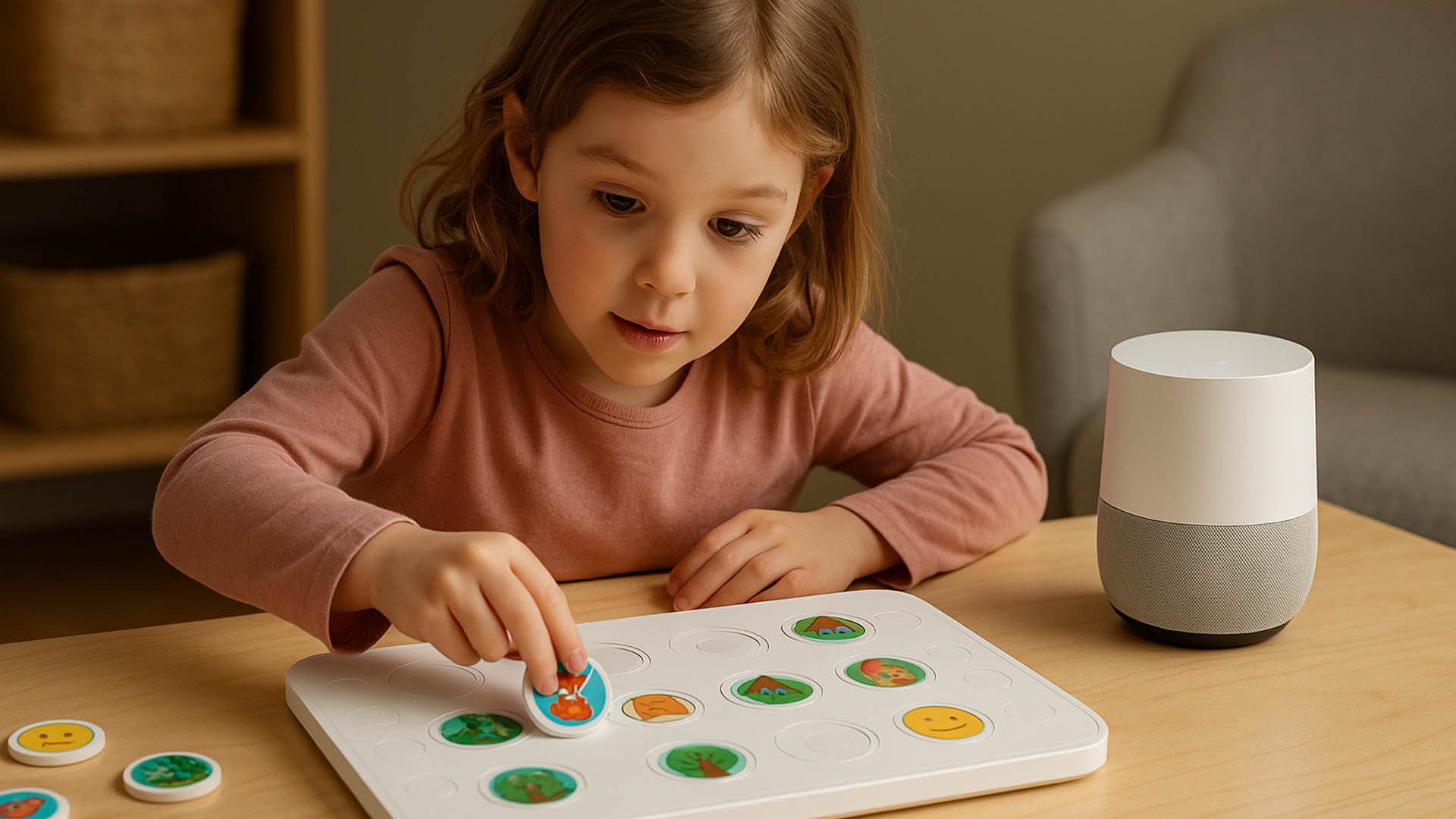Tinker Tales, introduced in 2025, merges physical gameplay with child‑friendly AI. Children select pawns representing characters, items, places, and emotions on an NFC-equipped board. The AI then prompts them to build stories, refining narrative skills and teaching how to structure prompts—just like guiding AI in grown-up tools arXiv.
How It Works
- Tactile Story Setup: Kids place tokens for story elements like “forest elf,” “mystery box,” and “happy”
- Speech-Based Interaction: Children add details verbally; the AI responds, shaping the narrative
- Collaborative Storytelling: The board physically structures the story flow—beginning, conflict, resolution
Benefits for Kids & Families
- Narrative Development: Teaches plot, characters, and emotional arcs
- AI Literacy: Introduces concept of prompt design and AI collaboration responsibly
- Family Play: Promotes cooperative storytelling and imaginative interactions
- Safe Design: Evaluated for quality and age-appropriate content in studies
How to Use at Home
- Pull it out as a weekly storytelling ritual—everyone builds a story together
- Encourage children to expand the story—draw illustrations or act it out
- Compare different prompts to explore how AI responds to specific detail
Conclusion
Tinker Tales offers a groundbreaking way for children to learn storytelling and respectful AI interaction through hands-on play. It’s a safe and engaging space where imagination meets early literacy and technology awareness.
Q&A Section
Q1: What age group is it meant for?
A1: Early elementary ages (5–9) benefit most from structured AI storytelling and narrative building.
Q2: Do parents need to control AI replies?
A2: AI content is curated for safety, but adult supervision ensures the story stays on track and context-aware.
Sources:
- ArXiv summary of Tinker Tales storytelling framework The4™ Studio+14arXiv+14Sesame Workshop+14The Guardian








0 Comments